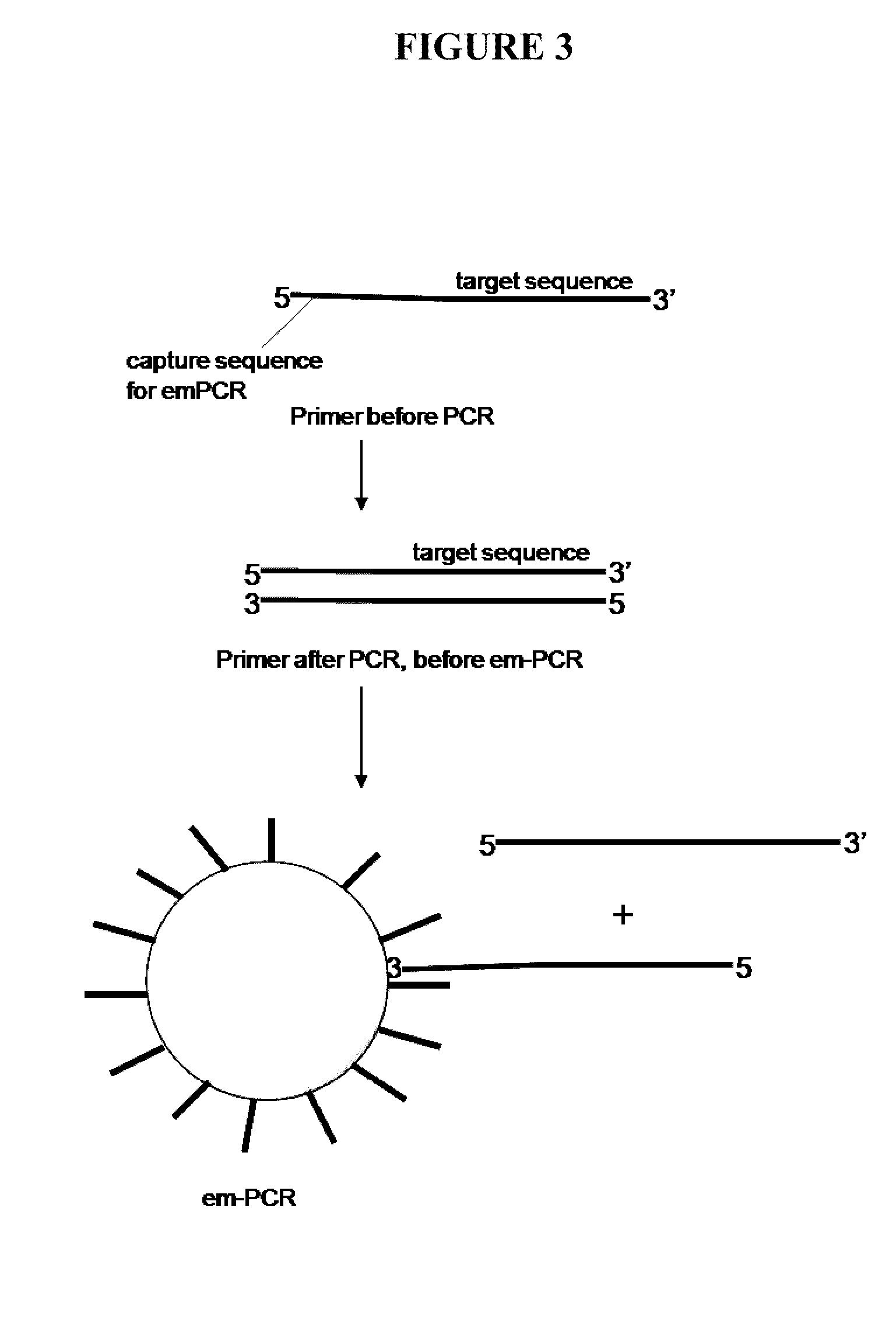Capture primers and capture sequence linked solid supports for molecular diagnostic tests
a technology of primers and solid supports, applied in microbiological testing/measurement, biochemistry apparatus and processes, instruments, etc., can solve the problems of reducing the number of patients,
- Summary
- Abstract
- Description
- Claims
- Application Information
AI Technical Summary
Benefits of technology
Problems solved by technology
Method used
Image
Examples
example 1
Use of Capture Primers and Capture Sequence Linked Solid Supports
[0137]This example describes the use of capture primers and reverse methods, as well as solid supports linked to capture sequences, to identify the sequence of a target nucleic acid using PCR methods and sequencing methods. The following method may be run using, for example, any of the available next-gen sequencing chemistry / platforms. “Next next-gen” technologies, such as nanopore or zero mode waveguide, may also be employed with such methods. Capture primers that may be used are shown in FIGS. 1A and 1B. These capture primers are designed with a 3′ tail section complementary to the target nucleic acid and a 5′ portion containing a capture sequence. Multiple patient samples can be sequenced simultaneously by using primers containing a “bar code” sequence (shown in FIG. 1B) located between the target and capture sequence or at the extreme 5′ end. FIG. 1B shows the bar code sequence in the middle of the primer.
[0138]Sam...
PUM
| Property | Measurement | Unit |
|---|---|---|
| diameter | aaaaa | aaaaa |
| volume | aaaaa | aaaaa |
| volume | aaaaa | aaaaa |
Abstract
Description
Claims
Application Information
 Login to View More
Login to View More - R&D
- Intellectual Property
- Life Sciences
- Materials
- Tech Scout
- Unparalleled Data Quality
- Higher Quality Content
- 60% Fewer Hallucinations
Browse by: Latest US Patents, China's latest patents, Technical Efficacy Thesaurus, Application Domain, Technology Topic, Popular Technical Reports.
© 2025 PatSnap. All rights reserved.Legal|Privacy policy|Modern Slavery Act Transparency Statement|Sitemap|About US| Contact US: help@patsnap.com



